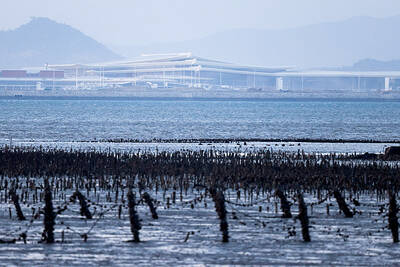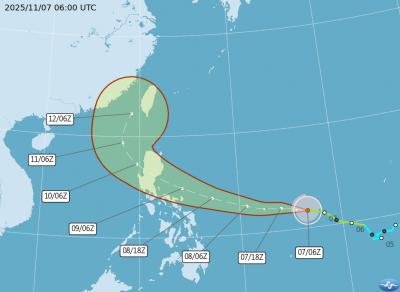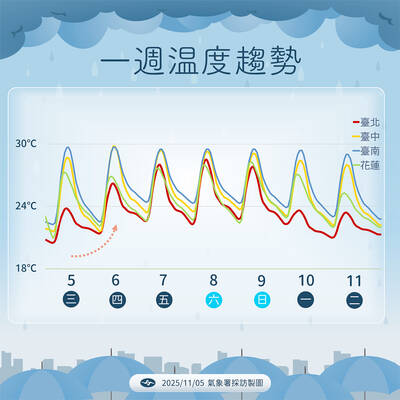Controversy over the portrayal of Aborigines in the film David Loman 2 (大尾鱸鰻2) continued yesterday, with activists protesting outside the offices of movie producer Vision Film Workshop Ltd.
Members of the Indigenous Youth Front held incense sticks while bowing before a picture of film director Chiu Li-kwan (邱?寬) in a mock memorial service, fumbling as they peeled through sheets of joss paper before flinging them in the air.
Activists said their inappropriate use of the “Han Chinese” ceremony was meant to spotlight the misrepresentation of their culture in David Loman 2.

Photo: Chen Yi-chuan, Taipei Times
The film has been criticized for a scene in which the main characters run into Tao Aborigines protesting against nuclear waste being stored on their native Orchid Island (Lanyu, 蘭嶼), with one character speaking gibberish to the protesters, who call him a “lunatic.”
“When you take something you are not familiar with and put it in the film as a joke, your racism is rubbing salt deep into 30-year-old wounds,” said Indigenous Youth Front member Savungaz Valincinan, a Bunun Aborigine.
She said Tao Aborigines had been deceived about the purpose of the nuclear waste site, which she said was built in the 1980s without any public hearings or consultation.
“The impact of movies goes far beyond what most people think,” she said, citing as an example the 1980s film Yes, Sir! 2 (報告班長2), which has had a lasting impact in spreading stereotypes about Aboriginal accents, with variety show hosts still using long drawn-out syllables at the end of sentences to tease Aboriginal guests.
“In the future when people see Tao Aborigines wearing their sacred hats and armor made of vines, will they think it’s funny?” she asked.
She demanded that the film producer issue a “sincere apology” and remove the controversial scene when the movie is released on video.
“Regardless of whether or not racism is ‘intentional,’ it still creates a huge amount of damage,” she said, calling for education reforms to bring in Aborgines’ perspectives and for the removal of nuclear waste from the island.

UNILATERAL MOVES: Officials have raised concerns that Beijing could try to exert economic control over Kinmen in a key development plan next year The Civil Aviation Administration (CAA) yesterday said that China has so far failed to provide any information about a new airport expected to open next year that is less than 10km from a Taiwanese airport, raising flight safety concerns. Xiamen Xiangan International Airport is only about 3km at its closest point from the islands in Kinmen County — the scene of on-off fighting during the Cold War — and construction work can be seen and heard clearly from the Taiwan side. In a written statement sent to Reuters, the CAA said that airports close to each other need detailed advanced

Tropical Storm Fung-Wong would likely strengthen into a typhoon later today as it continues moving westward across the Pacific before heading in Taiwan’s direction next week, the Central Weather Administration (CWA) said. As of 8am, Fung-Wong was about 2,190km east-southeast of Cape Oluanpi (鵝鑾鼻), Taiwan’s southernmost point, moving westward at 25kph and possibly accelerating to 31kph, CWA data showed. The tropical storm is currently over waters east of the Philippines and still far from Taiwan, CWA forecaster Tseng Chao-cheng (曾昭誠) said, adding that it could likely strengthen into a typhoon later in the day. It is forecast to reach the South China Sea

Almost a quarter of volunteer soldiers who signed up from 2021 to last year have sought early discharge, the Legislative Yuan’s Budget Center said in a report. The report said that 12,884 of 52,674 people who volunteered in the period had sought an early exit from the military, returning NT$895.96 million (US$28.86 million) to the government. In 2021, there was a 105.34 percent rise in the volunteer recruitment rate, but the number has steadily declined since then, missing recruitment targets, the Chinese-language United Daily News said, citing the report. In 2021, only 521 volunteers dropped out of the military, the report said, citing

UNKNOWN TRAJECTORY: The storm could move in four possible directions, with the fourth option considered the most threatening to Taiwan, meteorologist Lin De-en said A soon-to-be-formed tropical storm east of the Philippines could begin affecting Taiwan on Wednesday next week, the Central Weather Administration (CWA) said yesterday. The storm, to be named Fung-wong (鳳凰), is forecast to approach Taiwan on Tuesday next week and could begin affecting the weather in Taiwan on Wednesday, CWA forecaster Huang En-hung (黃恩鴻) said, adding that its impact might be amplified by the combined effect with the northeast monsoon. As of 2pm yesterday, the system’s center was 2,800km southeast of Oluanbi (鵝鑾鼻). It was moving northwest at 18kph. Meteorologist Lin De-en (林得恩) on Facebook yesterday wrote that the would-be storm is surrounded by